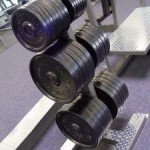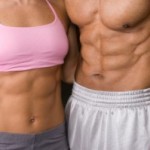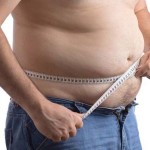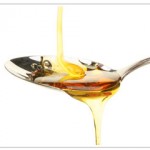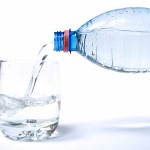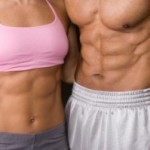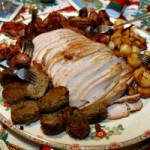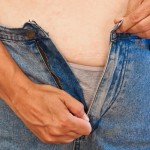Firstly let’s be clear – you want to look for fat loss not weight loss. You can lose weight through water loss, muscle loss or even bone mass loss – none of which will do anything except make you into a smaller ‘skinny’ fat person with a lousy metabolism and a host of health problems.
Secondly let’s take a look at what passes as the latest & greatest solutions to being ‘overweight’… Some are new, some are old timers dressed up in new clothes…
Everyday there seems to be a new miracle cure or miracle machine available everytime you turn on the TV. Each one promises 6-pack abs, and the body of your dreams ( also notice how most of them miraculously seem to give you a tan, whiter teeth, and big hair…)
But it is not just TV – every newspaper or magazine you pass on the newsstand or open has more miracles waiting for you to try – Pills, secret herbal formulas, tibetan fruits, extracts from the South Sea islands, Nepalese diets or yet other machines.
Radio has it as well, and so does the internet – especially the health & Lifestyle sections of on-line news… we are bombarded by the patently untrue mesage that there is amagic bullet, pill, potion, herb, diet or machine that will transform our bodies with minimal effort and virtually overnight.
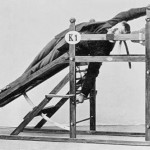
Scam machines have been around for long, long time...
Emotionally we go “Well it sounds plausible, those people look a lot better and they couldn’t advertisie it if it didn’t work could they…’ This drowns out the logical part of us that goes ‘Hang on – None of this stuff I’ve tried has worked in the past, people get paid for these ads, this just can’t be right – it all seems too good to be true’
Marketing is an art that uses advertising to excite the emotional part of us and shut down the logical part. They do this by appealing to our vanity, our wants & desires; by having celebrities endorsing the latest machine / potion / pill and by using incredibly good looking people as demonstrators.
The truth is that far too often we fall into the artful marketing trap and end up buying a machine that does not do as it promises or else has a restrction on how heavy you can be to use it (and this is always not a level that enable males in particular to use them); or with pills / potions or lotions that just don’t work. Even worse is the diet plans that wreck your metabolism even further by encouraging poor nutrition or is impossible for an adult with a job or a family to keep to..
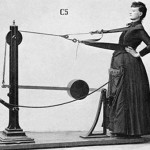
yep - that'll work...
Then if we do lose weight on the miracle program we put it all back on in short order and usually add a few pounds more than when we started.
Worst of all we waste our hopes, our time and our money things that just don’t work. Remember the old marketing adage – ‘Sell the sizzle, not the steak.’In short we waste time, energy and most of all hope on these scams.
I have personally beeen caught out by these things many times over the years and I want to help you avoid making the same mistakes that many of us make by getting involved in these rip offs.
Here are some of the curent ones:
Scam#1: The you-beaut, fantastic, proven by thermal imaging amazing 6-pack machine / gadget / device
Everyone wants a flat stomach. Every male (and quite a few females) want 6-pack abs and every year there are at least 7 or 8 new machines put out on the market. Each one promises that it is / uses the latest tchnology and will transform your body in only minutes a day or week.
(to be fair some of them also – usually passed over or in the fine print – mention that you have to use the machine AND their special diet as well to achieve results)
Of course we know that to lose fat we have to:
- Create a calorie deficit
- Manipulate your hormones through diet, food choice, frequency of meals
- Exercise
- Recondition & fire up your metabolism through all of the above.
Not only can you NOT lose fat by sitting / lying/ twisting / jumping on the latest machine for 7 or 10 minutes a day (or what ever the latest claim is ), you CAN’T spot reduce. No machine short of the ones plastic surgeons use for liposuction can deliver spot reduction. Not a one.
Oh yeah and doing 100’s of crunches doen’t reduce your fat or weight either.
Fat loss results happen due to reductions in the fat carrried by your entire body. Physiologically you can’t just burn the fat from a selected area. (although there is some research out about BAT – brown adipose tissue, a type of body fat designed for quick burning – that may support spot reduction in very specific areas 9 upper back – and under very specific conditions – just wait until the marketing guys get their hands on that!!)
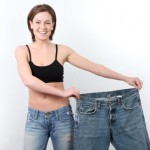
What they promise...
The models using the machines were already in shape and were hired for the ads because they were in shape and could use the machine without falling off!! They shure did not get into shape using the machine they are smiling about on TV.
None of us should fall for the fiction that by by rocking back and fort or by circling or twist stepping that we will end up looking like the models. We let hope (or despair) overrule commonsense.
Still literally millions of these useless devices / machines are sold every year. I have a friend who has a collection fo them – all were flavour of the month for about 2 weeks – all ended up in the basement, the closet or under the bed. Not a few have made appearences on EBay.
All failed and yet my friend like others just keeps falling for the marketing again. And again. (By machines & devices I include sliders, treaders, walkers, gliders, swings, bean, roll ups twisters, circlers etc etc)
My personal favourite is the one that ‘works’ your abs by giving you small electric shocks. Comedian Robin Williams has got it 100% correct when he says: ‘You’d be better off wrapping it around your head, turning it on and saying ‘I will not buy stupid s*it like this again!!”
Scam #2: Special Super Weight Loss diet plans.
This one is easy to spot – it either involves diet plans that totally cut out an entire food group or it is based on using an exotic fruit / vitamin, extract or juice.
Another scam easy to spot is those diets that require you to eat only 1 type of food for an extended period of time – no-carb, low-carb, no meat, no cheese, no fish, lemon juice only, high protein, watermelon, no fruit, fruit only, cabbage soup, chicken fruit, Israeli Army diets, food combining, lemon pepper, grapefruit diets banana diets, bean diets, French diets, Hollywood diets, Beach diets, fat diets – etc etc

Not for the long term & most are a scam...
A hallmark of these types of diets is their lack of nutritional balance, their rebound weight gain after you go of them and a further slowing of your metabolism.
These all have several things in common – they do work (for a short while) for weight loss, they wreck your fat metabolism and they are a waste of time. Any severe alteration to food ingestion and reduction in calories will result in some weight loss, even, in some cases, some fat loss – but most of them cause weight loss by fluid loss and as these are often poor in terms of protein you also lose lean tissue. Result – an even more compromised metablism and rapid weight gain.
It may be necessary to recondition your metabolism and refresh your food habits by using a short term more restrictive program (like Lose 20 in 30) but unless such programs are nutritionally balanced and based around better dietary choices they will not work.
Of course once your metabolism is reconditioned then you can move to a lifestyle program that ensures you stay lean & fit & healthy.
Scam #3: The ‘Unbelievable Body Transformation with a side of Miracle results in a short period of time’ Products
It is possible to lose 30 pounds or more of fat in a month – but this requires a strategic and holistic program covering diet, hormone manipulation, food choices, feeding frequency metabolic reconditioning and not a small measure of discipline. Fat loss of this magnitude cannot be continued on and on either – mentally & physically you will need a rest. My point is that to lose fat rapidly requires a structured, strategic program that covers a lot of ground.
If you see a diet plan that tells you you are going to see rapid, overnight results – you know the type ‘lose 10 pounds in 3 days!! – just walk away. If you see an ad for the latest fat burning / blocking / destroying pills – walk away. Because they don’t work in nearly all cases and the few that do only work for a short time.
If people are not trying to recondition their metabolism and are taking the long view, then losing up to 4 pounds (2 kilos) a week is about the average healthy fat loss. Most people who are watching their food choices, eating less processed crap and moving more tend to lose fat at this rate. Nearly everyone loses more weight in their first few weeks than later on. This is because of a number of factors. The main factor is homeostasis – your body does not like change and tries to stay the way it was before you began to alter your habits. The other reason is that a lot of the initial weight loss (not fat loss) can be fluid that is freed up as your body adjusts to new food choices and calorie limits.
It is also true that less fat you have to lose the slower you’ll lose it – see homeostasis above…
The miracle results scams usually require you to go a liquid / shake only diet, buy their special calorie controlled diet food or use special pills or / patches. All in all just a way to part you from your money. Again the results of these types of programs tend to be short term and when the pills run out (if not before), the last shake has been taken then the weight comes back. With a vengeance.
(I should point out that there are some Doctor prescribed medicines that do indeed speed metabolism and assist in fat loss, but these are not the ones you see with celebrity endorsements or on TV. Nor are they the ones you can buy over the internet, proper medically supervised liquid only diets do exist and they are used in life threatening circumstances and are administered in medical facilities – not your kitchen.)
But real fat loss, lasting leanness comes from what; when; & how much you eat and how often and how much & often you move. That’s it. No magic potions, pills, patches, foods or bullets exist to do the job for you. None.
Save your money and your emotional well being.
Scam #4: ‘Diet Foods & Foods that cry out ‘Fat Free’!!
My favourite – ‘Fat Free’ they scream from the packaging as if all fat was the enemy (its not) and yet they fail to mention the amount of sugar they have put in to the products to replace the fat, or the amount of indigestable gums they have added to replace the mouth feel of food that has had the fat removed.
 Nutritionally these foods are a disaster area and they can actually add to a tendency to put on fat. Most of these pre-packaged, processed ‘fat-free’ foods contain a wide array of additives, such as high fructose corn syrup, refined sugars, MSG, sodium and saturated fats. Yes fat.
Nutritionally these foods are a disaster area and they can actually add to a tendency to put on fat. Most of these pre-packaged, processed ‘fat-free’ foods contain a wide array of additives, such as high fructose corn syrup, refined sugars, MSG, sodium and saturated fats. Yes fat.
You see current US law requires that fat content of greater than five grams be listed in one gram increments, less than five grams be listed in .5 gram increments, and lower than .5 grams as containing zero grams of fat. Thius means that if a product has .49 grams of (any including trans) fat, the label can list the fat content as zero. In the case of trans fats this amount (.49 grams) is way over the recommended daily allowance and could contribute to various adverse health effects.
Moreover most of these foods are low in protein, which as regular readers of this blog know is needed to stimulate your metabolism, maintain and build muscle tone.
In theory, I like the idea of pre-packaged meals to assist in weight loss. They make it easier to control portion sizes but the truth is that they too are examples more of the marketer’s art than of any real fat loss benefit. Plus they tend to be more expensive than real food.
Then there is the issue of dependence – what happens if someone stops using these foods and has not learnt about proper food choices? They return to old habits and the cycle begins again…
So if you’re thinking about using pre-packaged foods because of the convenience factor, just be sure to look at the ingredients and if you see a high amount of sugars and gums put them back on the shelf. After all, many pre-packaged diet foods are stuffed with additives that encourage rather detract from obesity.
Scam #5: Celebrity or fake doctor-endorsed diets.
Celebrities are paid big bucks to endorse products – famously many Hollywood types go to Japan and make millions by endorsing products that have not and never will use.

But they wouldn't use it if it didn't work...
It is not so different in the West. Celebrity endorsement works – people want to be ‘Like Mike,’ they want to be able to identify with their heros – whether from sports or entertainment.
Look use commonsense – if a celebrity is promoting a product the chances are they did not use it to get the way they look, or to gain the effect of the product they are promoting. (I think that Chuck Norris is one of the few who actually used a product they promoted – the body weight gym thing.) Even if the celebrity actually used the product does not mean that it is safe, effective or works – just that the celebrity involved has a bit more integrity than others…
Look don’t trust celebrity advice on weight loss. Particularly if you know they’re being paid to say what the company wants them to say. Just because an actor used to star in your favorite TV show, doesn’t mean they’re suitable to, or qualified to, give you cogent weight loss advice. Remember, most celebs, even the Bor D grade ones, have a whole behind-the-scenes team helping them get, look and stay slim.
Worse still are the Doctors for hire. In Australia we see few medicos endorsing weight loss products, but we do see an endless stream of nutritionists, dieticians and personal trainers doing so. This is not the case in other countries where you can add Doctors for Hire to the advertising mix.
In these cases it is usually some Doctor (often a Dentist, a Chiropractor, Doctor of Philosophy or from some non-medico type) you have never heard of touting some miracle pill / potion / device that is a breakthrough you’ve also never heard of. Just remember he is being paid for his time & endorsement. Many of these Docs for hire hail from fields of study that have as much to do with fat loss as a mechanic has to do with flower arranging.
Scam #6: Toning Shoes & Shake Weights
It seems that everyone has their own version of ‘toning shoes’ out now. Target & K Mart carry in-house brands, and many international footwear companies have their own versions. Does this proliferation mean that they work? Do the celebrity endorsements mean that these are one of the ‘secret’ tricks used by the celebs in question to stay in shape?
No – it just means that the idea behind them is logical enough that a whole lot of people are buying them.
By stimulating various muscle groups through an unstable platform, these shoes supposedly increase both muscle tone and weight loss. Unfortunately testing by various consumer groups have conclusively proven that this is not the case and that the shoes could in fact cause you injury.
Just because a celeb says they use them doesn’t make it true. And even if they do, it doesn’t mean that they work…
Just like Shake Weights.
Apparently there are hundreds of fit, chiselled, lean men & women who shake weights for 15 minutes a day to get in and stay in shape. Entire armies of closet weight shakers…
If you look at the weights involved and how they are supposed to used youn will see that they are closer in concept & performance to those Ab belts of the 70’s & 80’s. or take a look at your local bar tender – he is unlikely to show a musclar physique from all of those cocktails he has shaken and served…
Sorry – they don’t work – the idea that the vibration they provide stimulates your muscles enough to burn significant calories and stimulate muscle growth is laughable.
Stay away from them.
Scam #7: Performance enhancing hologram embedded braclets.
Seriously a piece of silicon rubber with a ‘hologram’ embedded in it is supposed to enhance your athletic ability and therfore assist in developing the body & sport’s perfomance of your dreams. And this piece of ‘technology’ only costs $60 (unless you go to EBay & buy from China where this fashion accessory will cost you about $2)

In Australia they have had to withdraw their claims and offer refunds...
I really don’t have to go any further with this one do I??
So there you have it – some of the top weight loss scams to avoid.
Be well, I’ll be back soon, and focussing on foods you can add to your diet to help you drop the fat..

